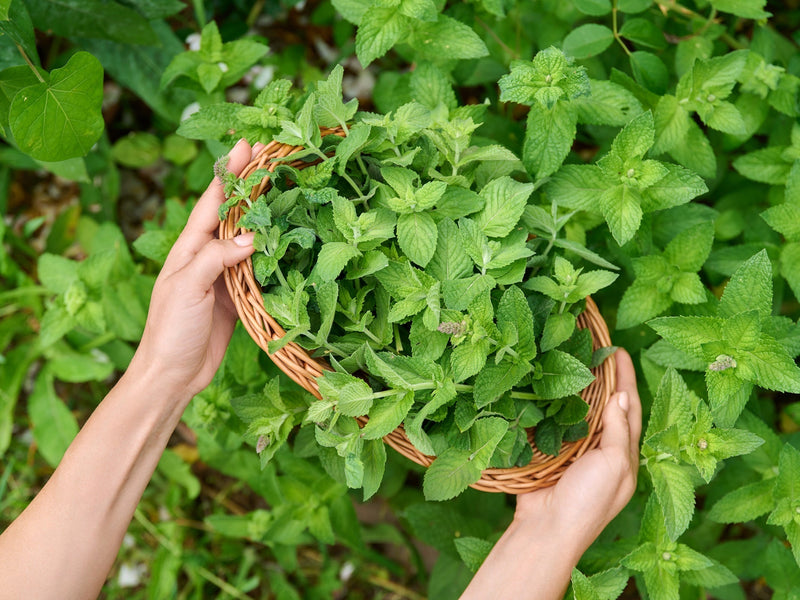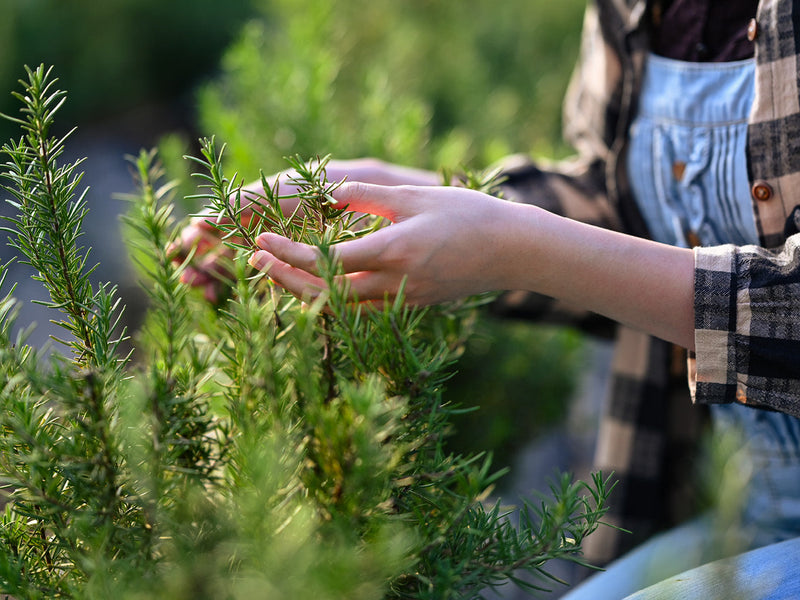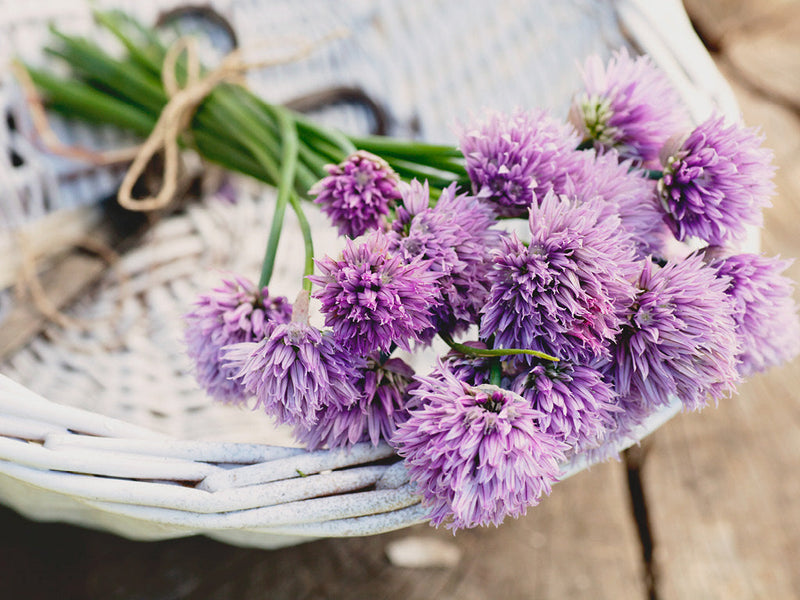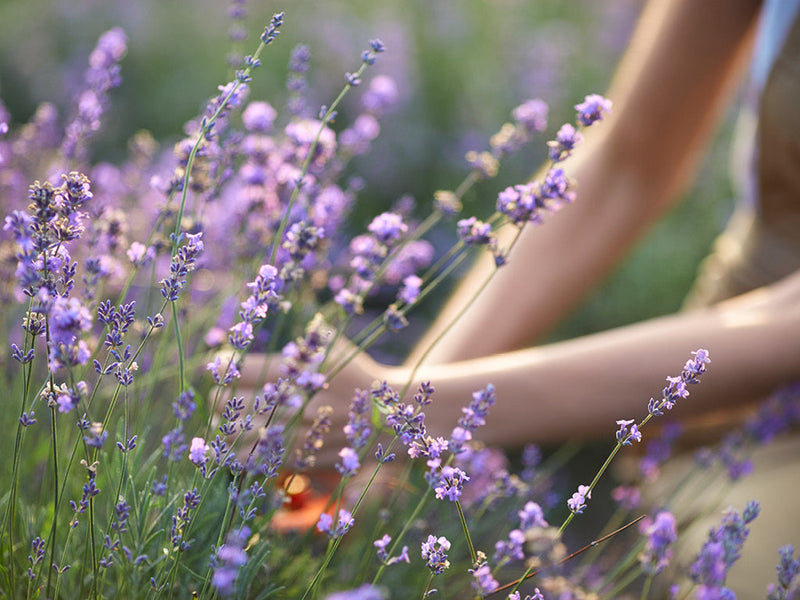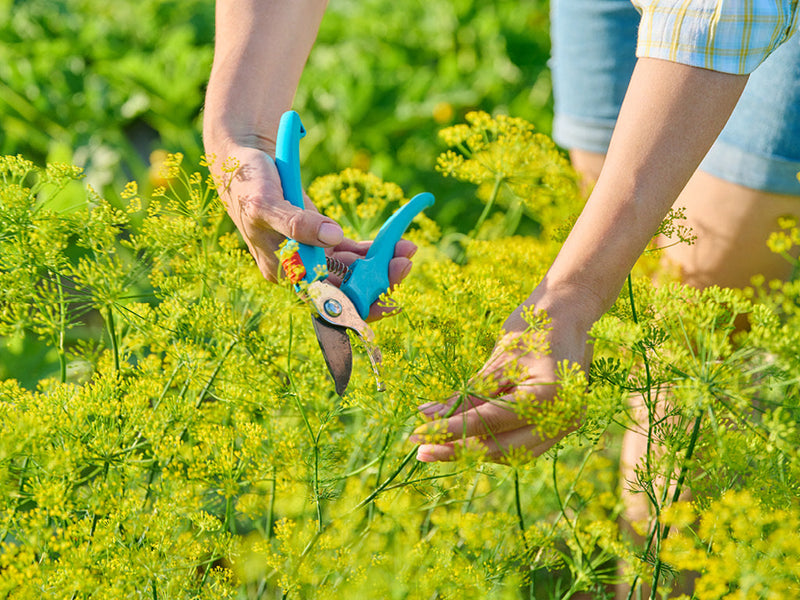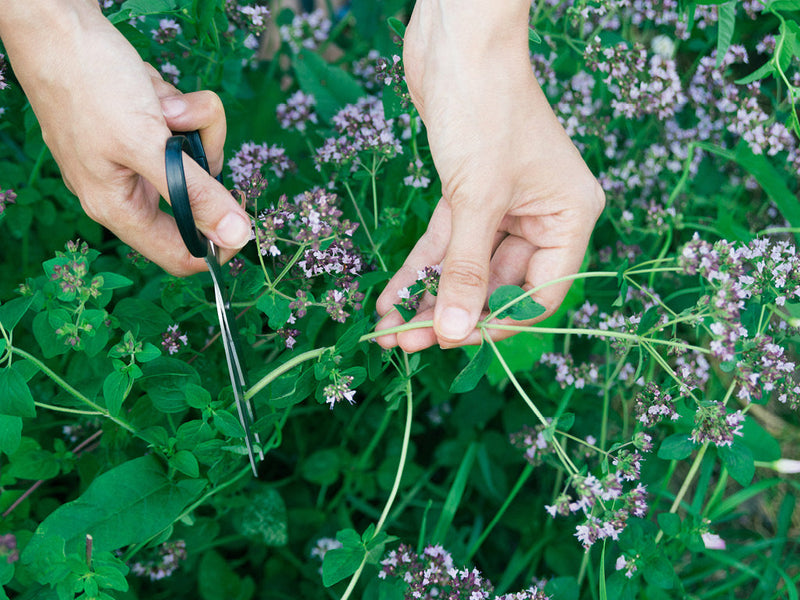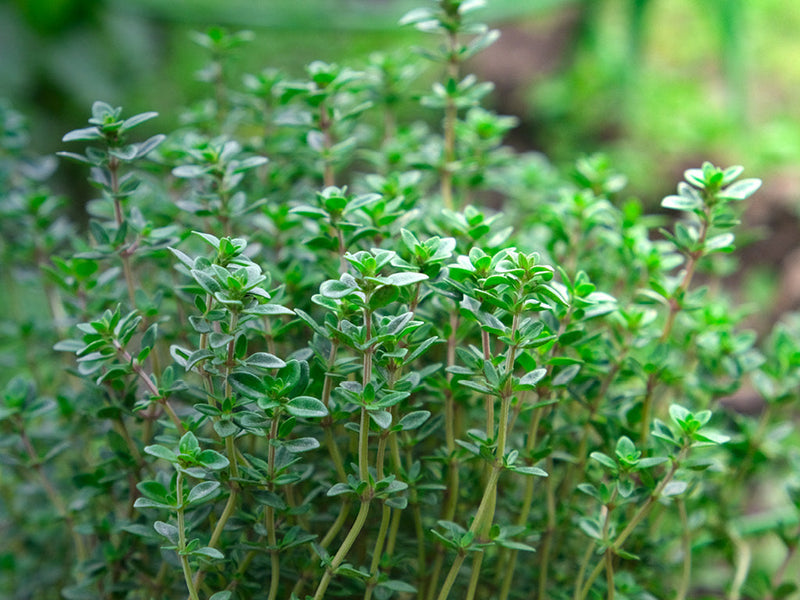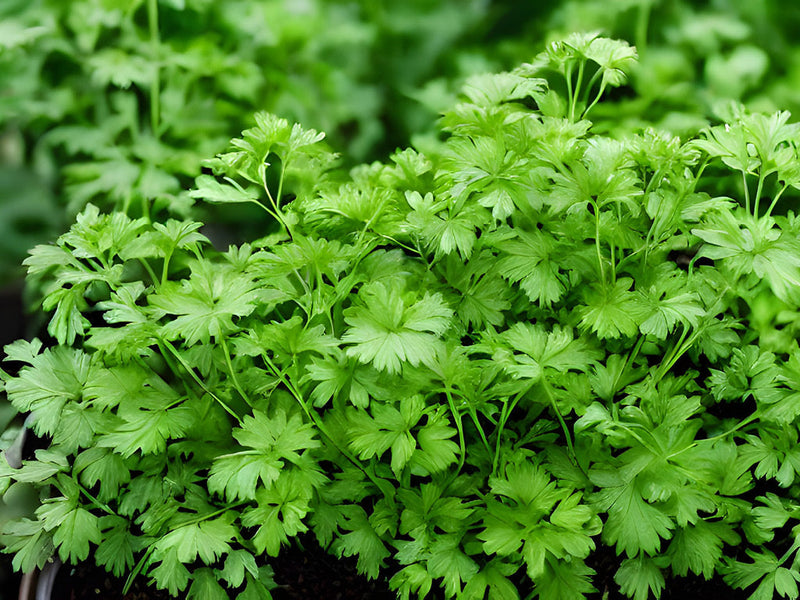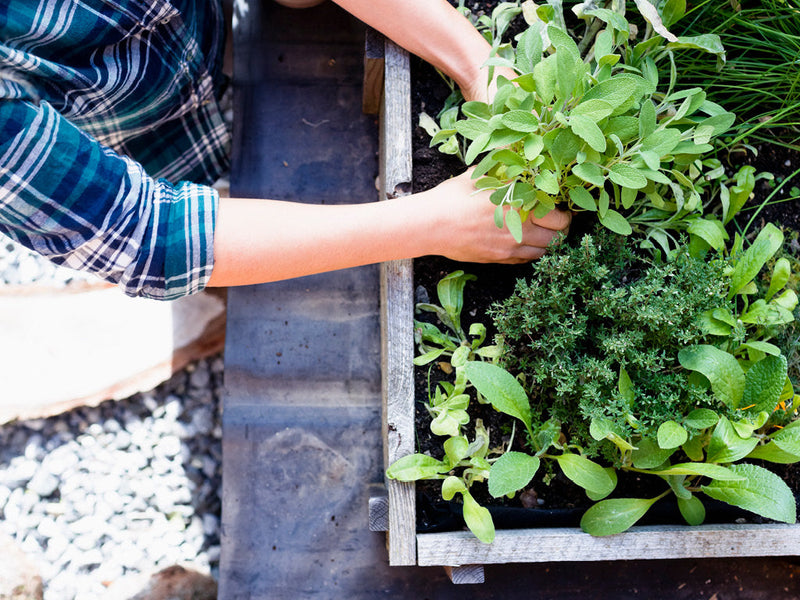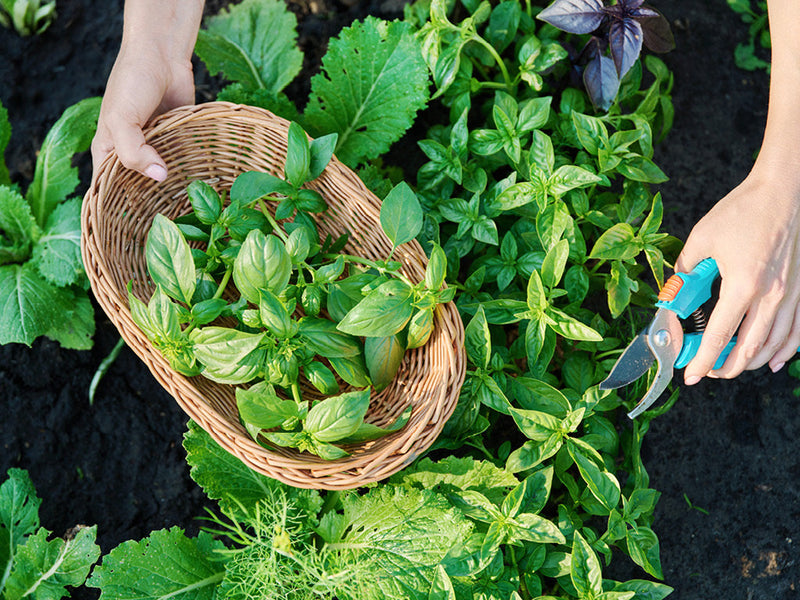Parsley is another herb wonder originating from the Mediterranean. Rich in vitamin C, A and K and other antioxidants, this herb is used regularly in Italian, Greek and Middle Eastern cuisine. Personally, I can't resist snagging a sprig of this vibrant and fresh herb every time I stroll through my garden.
Parsley is a biennial herb, which means it produces lots of leaves in the first year, then flowers and goes to seed in the second year. Most people grow parsley as an annual, as after the first year the leaves begin to get bitter as the plant concentrates on flower and seed production. Regardless of how you choose to grow this herb, this article will have all the information you need to start parsley from seed through harvest.
Different Types of Parsley Plants
The two most popular types of parsley are flat leaf and curly. These two herbs have very unique qualities from their appearance to flavor. Explore the qualities of each parsley to determine what type is best for you. As I always recommend, grow what you love to eat!

Flat-leaf parsley has leaves that are dark green in color and look similar to a stalk of celery. It's broad leaves have a bold, fresh and aromatic flavor. Flat leaf parsley is popular in salads, sauces, meat dishes, and baked goods. A personal favorite is making chimichurri sauce––pairing olive oil, garlic and lemon juice with lots of fresh flat leaf parsley and a touch of cilantro and basil.

Curly parsley has rough, curled leaves and is a brighter shade of green than flat-leaf. Curly parsley is very mild compared to flat leaf parsley and has a grass-like flavor. Curly parsley is often used to dress up dishes as a garnish. Curly parsley is also traditionally used in the Middle Eastern dish tabbouleh.
When to Start Parsley Seeds
Indoors: If you’d like to get a jump on the season, start your parsley seeds indoors 2-3 weeks before the last predicted frost (find out your last frost date here).
Transplant seedlings outdoors once temperatures are consistently 50 degrees or warmer.
You can also keep parsley indoors in a sunny windowsill, under a grow light or in a hydroponics or aeroponics system year round. Check out our Indoor Gardening article for more tips for a successful indoor herb garden.
Outdoors: Direct sow seeds into your garden 1-2 weeks after your last frost. Parsley is a fairly slow-growing plant and takes anywhere from 2 to 4 weeks to germinate.
How to Grow Parsley
For indoor seed starting, use an organic, sterile, seed starting mix – we use our Organic Compressed Potting Soil to start all our seeds. Avoid using raised bed or outdoor potting mixes as they have larger particle sizes that could inhibit germination. Look for a light and fluffy mix that allows delicate roots to easily travel through and has good moisture retention.
For outdoor direct sowing, plant in well draining, but moisture retentive soil amended with compost. Make sure the location gets 6-8 hours of direct sun.
- Plant seeds 1/8” depth and barely cover
- Keep soil consistently moist, but not wet
- For indoors, plant 2-4 seeds per seed cell or 5-10 seeds per 4” pot
- For outdoors, plant 2-4 seeds every 8”
Basil Basic care
Feeding
Parsley plants need only light fertilization to excel in your indoor or outdoor garden. Use a balanced organic fertilizer like our 4-4-4 All Purpose Fertilizer to lightly top dress the soil monthly.
Watering
Water soil when it starts to dry out. Parsley likes moist soil, but does not like soggy overly wet soil. If your parsley plant starts to wilt, this is a good sign it needs more water.
Mulching
For outdoor planting, add compost around your parsley plants as a mulch. This will help with moisture retention and improve your soil structure and drainage over time.
Pruning & Harvesting
Pruning and regularly harvesting parsley is essential for a healthier, fuller, and more productive plant. Removing cluttered stems and leaves helps preventing diseases and helps make room for new growth.
To prune and harvest your parsley plants, follow the steps below.
- Once the parsley is 6 inches, you can begin harvesting.
- Cut stalks from the outer perimeter of the parsley plant only.
- Cut stalks down to ground level.
- Allow the newer inner parts of the plant to mature before harvesting more of the outer leaves and stems.
Pests and Diseases to Watch Out For
As with everything else growing in your garden, it's important to protect your parsley from pests and diseases. Here are some of the most common problems to protect against.
Common Parsley Pests
- Aphids
The simplest way to get rid of aphids is to wash them off your plants with a strong blast of water. A garden hose is perfect for this job. If they persist, make a homemade organic soap solution to spray on the affected areas. To make the solution use 1 tablespoon organic soap (I use Dr. Bronners Peppermint Castile soap) to one quart of warm water.
- Caterpillars, whiteflies, and swallowtail butterflies
To protect your parsley from these pests, you can use the same homemade organic soap solution as mentioned above.
Common Parsley Diseases
Stem Rot, mold, mildew, and other fungus-related diseases pose the biggest risk to parsley. Luckily, by using proper watering techniques and planting in healthy soil, you can prevent most of these issues. Here are a few additional tips for preventing and controlling fungal diseases.- Keep your soil well-drained and not damp.
- Keep the parsley leaves dry by not allowing moisture to sit on them for too long. Watering in the morning is best so the sun can dry leaves quickly, rather than watering in the evening when leaves may stay wet overnight.
- Remove infected leaves. If you find diseased leaves remove the section of the plant (or the whole plant if needed) and dispose of it so the disease cannot spread.
Parsley Storage and Preservation
Flat-leaf parsley will stay good in the refrigerator for up to a week if you store it in an airtight container. You can also opt to store parsley in the freezer in an airtight container, where it will stay good for up to a year. Finally, you can also dry parsley for storage, but it will lose some of its flavor. To dry parsley for long-term storage of one to two years, here's what you need to do.
- Spread parsley on a cooking sheet.
- Place in the oven on the lowest setting for 2-4 hours.
- Once dry, discard stems and store parsley in an airtight container at room temperature.
Like most herbs, parsley tastes the best when you use it freshly harvested. The longer you keep parsley in storage, the more flavor it will lose.
Good Companion Plants For Parsley
One of the great things about parsley is that it's a great herb to plant alongside companion herbs and veggies. You can plant anything from tomatoes and sweet corn to asparagus and peppers next to parsley. In addition to boosting each others' growth, parsley is also a natural repellent against carrot rust flies and asparagus beetles. Other herbs, like basil and chives, are also good companion plants for parsley.
In the same way that there are good companion plants, there are also bad companions for parsley. These include closely related plants like parsnips, celery, and carrots because it could result in unwanted cross-pollination. You should also avoid planting mint too close to parsley, as it's a very invasive plant and could impede the parsley's growth.
Final Thoughts About How to Grow Parsley
As you can see, there's a lot to know and love about growing and harvesting parsley. It's a fairly easy and forgiving herb to grow on your own and is a great way to add flavor and color to your meals. It's important to remember that parsley has a slow germination process and doesn't mind cooler weather.
If you keep these details in mind and choose a suitable spot for your parsley, you'll be reaping the benefits soon enough!
Happy Growing!
![]()

